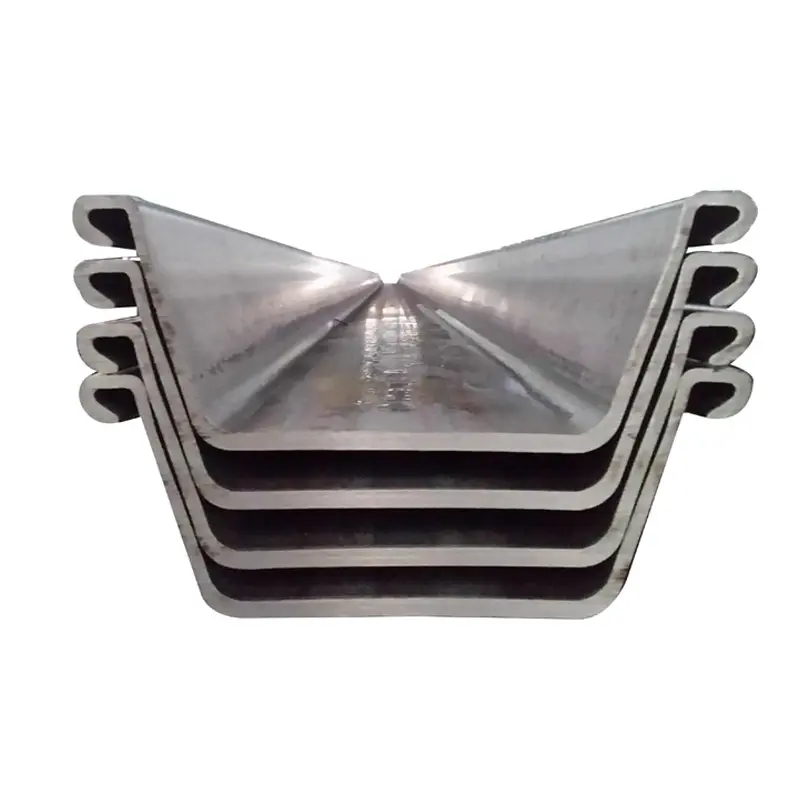Z type steel sheet pile features a Z shaped cross section, designed to maximize moment resistance and interlock strength for demanding applications requiring high load bearing capacity. The alternating convex and concave flanges create a robust interlock when combined with adjacent piles, distributing bending moments more efficiently than U shaped profiles, especially in deep excavations or soft soil areas. Material selection often prioritizes high strength low alloy steels to capitalize on the Z profile's structural efficiency, with grades like Q345C or ASTM A572 Grade 65 commonly used. The manufacturing process involves hot rolling to form the complex Z shape, requiring precise control over the rolling mill settings to achieve uniform web thickness and flange angles. Z type sheet piles are ideal for projects where space is limited, as their narrow profile allows for tighter spacing while maintaining high section modulus. Applications include deep basement walls in urban areas, harbor quay walls with high tidal ranges, and industrial retaining structures subject to dynamic loads. The interlock design of Z type piles typically includes a double wedged shape, enhancing resistance to lateral displacement and water leakage under high pressure. Engineering design relies on detailed geotechnical analysis to optimize pile spacing and embedment depth, often using computer aided design (CAD) software to model soil pile interaction. Installation may require specialized equipment to handle the asymmetric Z profile, ensuring proper alignment to prevent interlock jamming during driving. Quality control measures include interlock pull tests to measure connection strength and dimensional checks using 3D laser scanning to verify profile accuracy. International standards such as EN 10248 1 provide guidelines for Z type sheet pile dimensions and mechanical properties, facilitating cross border project execution. While Z type piles offer superior structural performance in high stress scenarios, their complex geometry increases manufacturing costs and may require more skilled installation compared to U type profiles. However, the long term benefits in terms of reduced deflection and enhanced durability make them a preferred choice for critical infrastructure projects where failure risks must be minimized.


